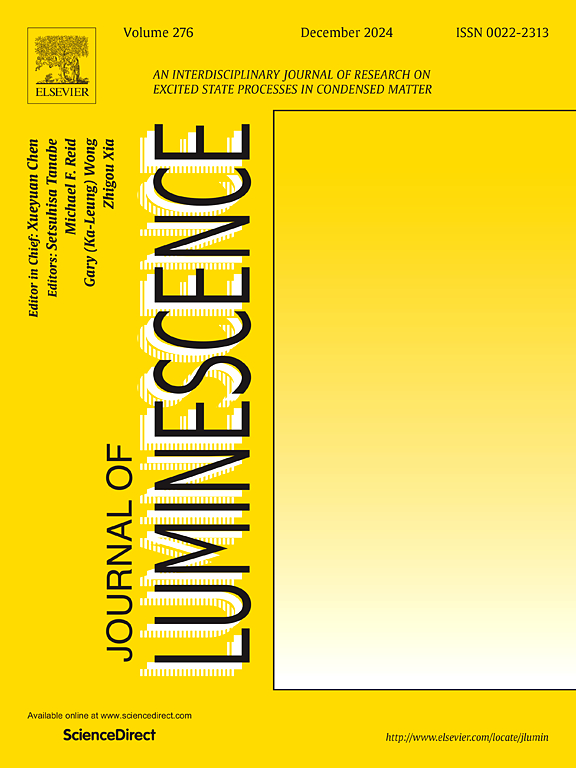Lattice mismatch, pressure and temperature effects on linear and nonlinear optical properties of InAs nanodots embedded in InAsP nanowires
IF 3.3
3区 物理与天体物理
Q2 OPTICS
引用次数: 0
Abstract
This study investigates the effects of lattice mismatch, pressure, and temperature on the linear and nonlinear optical properties of nanodots embedded within semiconductor nanowires. We present a comprehensive theoretical framework that models electron energy levels and wave functions in these nanostructures, incorporating the influence of hydrostatic pressure and temperature on critical parameters such as bandgap, effective mass, and non-parabolicity coefficient. Using the density matrix approach, we analyze three key optical phenomena: optical absorption coefficient, refractive index changes, and harmonic generation coefficients. Our calculations for nanodot-nanowire systems reveal that these optical properties can be significantly modulated by varying the composition parameter x, temperature, and applied pressure. The results demonstrate pronounced resonance peaks in optical absorption and refractive index changes corresponding to intersubband transitions, with systematic shifts observed under different environmental conditions. These findings provide valuable insights for the design and optimization of nanoscale optoelectronic devices, offering pathways to tune their optical response for applications in telecommunications, optical computing, and quantum information processing.
晶格失配、压力和温度对嵌入InAsP纳米线的InAs纳米点线性和非线性光学性质的影响
本文研究了晶格失配、压力和温度对嵌入半导体纳米线的纳米点线性和非线性光学特性的影响。我们提出了一个综合的理论框架来模拟这些纳米结构中的电子能级和波函数,包括静水压力和温度对带隙、有效质量和非抛物线系数等关键参数的影响。利用密度矩阵法分析了光吸收系数、折射率变化和谐波产生系数这三个关键的光学现象。我们对InP/InAs(1−x)Px/InP纳米点-纳米线体系的计算表明,这些光学性质可以通过改变组成参数x、温度和施加压力来显著调节。结果表明,光吸收共振峰明显,折射率随子带间跃迁而变化,在不同的环境条件下观察到系统的变化。这些发现为纳米级光电器件的设计和优化提供了有价值的见解,为电信、光学计算和量子信息处理等应用提供了调整其光响应的途径。
本文章由计算机程序翻译,如有差异,请以英文原文为准。
求助全文
约1分钟内获得全文
求助全文
来源期刊

Journal of Luminescence
物理-光学
CiteScore
6.70
自引率
13.90%
发文量
850
审稿时长
3.8 months
期刊介绍:
The purpose of the Journal of Luminescence is to provide a means of communication between scientists in different disciplines who share a common interest in the electronic excited states of molecular, ionic and covalent systems, whether crystalline, amorphous, or liquid.
We invite original papers and reviews on such subjects as: exciton and polariton dynamics, dynamics of localized excited states, energy and charge transport in ordered and disordered systems, radiative and non-radiative recombination, relaxation processes, vibronic interactions in electronic excited states, photochemistry in condensed systems, excited state resonance, double resonance, spin dynamics, selective excitation spectroscopy, hole burning, coherent processes in excited states, (e.g. coherent optical transients, photon echoes, transient gratings), multiphoton processes, optical bistability, photochromism, and new techniques for the study of excited states. This list is not intended to be exhaustive. Papers in the traditional areas of optical spectroscopy (absorption, MCD, luminescence, Raman scattering) are welcome. Papers on applications (phosphors, scintillators, electro- and cathodo-luminescence, radiography, bioimaging, solar energy, energy conversion, etc.) are also welcome if they present results of scientific, rather than only technological interest. However, papers containing purely theoretical results, not related to phenomena in the excited states, as well as papers using luminescence spectroscopy to perform routine analytical chemistry or biochemistry procedures, are outside the scope of the journal. Some exceptions will be possible at the discretion of the editors.
 求助内容:
求助内容: 应助结果提醒方式:
应助结果提醒方式:


